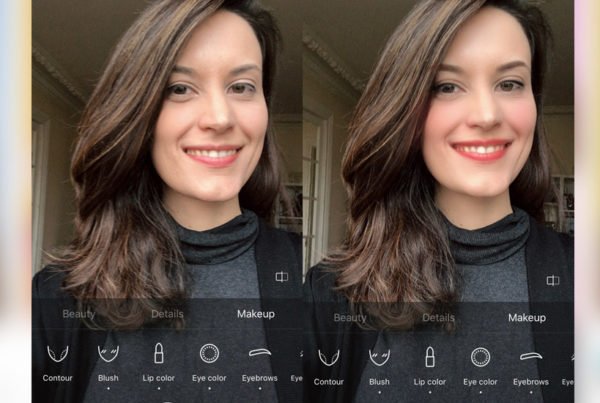Hello dear Realists,
I’m on week 3 of looking after my daughter all day, while her beloved nanny recovers from emergency surgery.
I’m in my childhood home in Italy, in a small village of 5000 people nestled in a hilly area between Milan and Como. I’m aided by my mother (una santa, grazie mamma!) and I’m only able to type this because from 2pm to 4pm every day, my little one naps.
Our day to day life, in this small Italian village, is peak Realist dream life. It’s about exploring places outside, socializing at the park twice a day, reading books at the library, playing with DUPLOs and eating fresh focaccia – with no screen time whatsoever. (The only screen time allowed before was for Facetime video calls with her Italian grandparents, but since we are with them, that has been reduced to zero minutes a day).
My little one is my Zen master, making me notice things that I normally would not pay attention to and gently pushing me to go all in with a Realist lifestyle – fully present in the real world, away from screens.
I thought I would write about this experience because:
(a) it fits in with the overarching mission of the Realists: investigating how new technology is changing us as humans… I’m now on the far end of the spectrum of low- to no-tech for a month, so it’s interesting to notice how this makes me feel.
(b) I am incapable of writing more in-depth posts – the kind I used to research and write before – because for the past 3 weeks I have been unable to be in a space alone with my thoughts for more than 2 hours per day. And it’s impossible to get into a state of flow or deep reflection when there is so little time to be productive and fit in important tasks.
There are three things that have been standing out during this Realist month: church bells, clocks and (social) callouts.
Church Bells
For my 2-year-old, the village’s church bells are an object of fascination that command attention and deep respect.
There’s a big church at the top of a hill in our village and every hour and every half hour, bells ring to signal the time. When there is mass, the ringing can go on for over 20 minutes. And wherever we are, whatever we are doing, my daughter stops in her tracks at the first ring and says “I want to look at the bells.” And that’s what we do, finding the best vantage point to look at them.

Capturing a “I want to watch the bells” moment
Looking at how the bells swing back and forth can be hypnotizing. It’s something I never stopped to look at before, but it has been a powerful reminder about the importance to slow down, be present, take in sights and sounds, and appreciate the regularity and companionship of those bells.
On one or two occasions, I tried to rush going home, but my daughter would point her feet on the ground and say “I want to keep looking at the bells.”
Often the ringing would last less than a minute – what am I in a rush for, I wondered? So now I stop to admire them with my daughter. And marvel about how something so simple and insignificant to most of the villagers can bring us a sense of awe.
Clocks
These days I look at my house clocks and my wristwatch a lot – to figure out when to start cooking meals for my daughter, when we should leave for the park, when the bells will ring next…
Time. Time has been on my mind a lot lately, for other reasons as well.
How time is the great democratizer, as we all have the same amount of time available any given day, whether we are rich or poor. Bernard Arnault, the richest man in the world, may be worth $215 billion, but he has as many minutes available in his day as you and I. Ditto for Oprah, Jeff Bezos, and everyone you know.
Time. I think about how, since the introduction of smartphones 16 years ago, days seem to have shrunk, with so much of our attention being sucked into mobile devices and social platforms. You unlock your phone, open an app, start clicking here and there and poof! 20 minutes may magically go by without you noticing.
Now that I’m spending most of my days offline, time seems to have slowed down significantly.
With a bit of sadness, I wonder about all the time that Big Tech has been “stealing” from us, especially kids. I see it every day at the park, in my little Italian village.
Every day, I notice tweens and teenagers sitting together in small groups hunching over their smartphones while commenting on whatever is on their screens. There is such a stark contrast between them and small children like my daughter, who are running around, climbing structures and gleefully going down slides.
The juxtaposition between the energy and activity of the little ones and the passivity of older kids, hypnotized by screens, is really jarring.
It’s hard to put my discomfort into words without sounding condescending. But it strikes me as poignant how, for little children, the large playground is full of potential for fun activities… whereas for teens who are physically in the same space, the world has shrunk down to a small rectangle that they hold in their hands.
Dr. Susan Linn, author of Who’s Raising the Kids? Big Tech, Big Business and the Lives of Children eloquently discussed this in a memorable passage of her book:
For babies mesmerized by phones or tablets the “world” they’re concentrating on is confined to a flat rectangle smaller than a square foot. It’s a world without taste, smell, textures, and — most important — other people. It’s also a world mediated by decisions made by someone else about what they should look at.
Dr. Linn is talking about babies here, but this passage perfectly applies to older kids as well. And adults, too.
(Social) Callouts
I’ve been joking with other parents at the park that it’s a good thing our feisty toddlers are still illiterate. Because there are vulgar, blasphemous scribblings on every single piece of playground equipment.
Slides, swing structures, tunnels and tubes are covered with writings by older kids (I presume). There’s the occasional “[insert name] I love you” but 90% of the writings are lewd, offensive invectives and vulgar drawings.
And – to my surprise – amongst them I have been seeing social media call-outs. “Follow [username] on Instagram”.
This morning, on a climbing structure, I even saw someone had drawn the Instagram logo, followed by a username.
I’m anonymizing the username… and blurring out a vulgar drawing too:
 I’ve seen several of these in the small park we go to every day. I find it… fascinating. How tweens and teens would consider important to promote to strangers at the park their social media handles – amongst a sea of mostly terrible scribblings.
I’ve seen several of these in the small park we go to every day. I find it… fascinating. How tweens and teens would consider important to promote to strangers at the park their social media handles – amongst a sea of mostly terrible scribblings.
It reminded me of how, in this brave new world, online popularity is the ultimate status symbol.
I’m glad my little one is only 2 years old and for now I can protect her from these (hollow) pressures.
It’s 4pm now. Time to wake her up, grab a snack, and head to the library.
Till next week,
E
Cover photo by Sergio Rota on Unsplash




